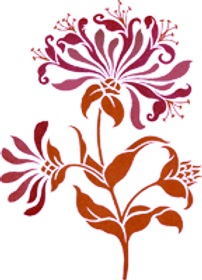
ENJOY A CUP
OF
Dark/ Pu-erh Teas
The Original Black
Veiled in mystery, Hei Cha, or dark tea, is a special category of aged tea from China that is seldom available outside of Asia. An important part of Chinese culture linked to century-old traditions, dark tea has yet to reach global recognition on the same scale as other tea types (such as green and black).

However, dark tea’s popularity is gaining momentum due to its powerful, medicinal effects. If Darjeeling is the “Champagne of teas,” then dark tea is its cousin—an aged, Cognac or Brandy.
Due to an error in translation by tea-traders centuries ago, what we call “black tea” in the West is actually called “red tea” in China (named after the reddish-brown cup-color common within this category) and what we now call “dark tea” is really called “black tea” in China. It is important to remember that what we call black tea (China’s red tea) and dark tea (China’s black tea) are two completely different categories of tea. (Adding to the confusion, rooibos is often referred to as “red tea” in the US—and this herbal tea category comes from a different plant and continent altogether).
Historically, dark tea was made in Hunan, Guanxi, Sichuan and Yunnan provinces where it was compressed into bricks, cakes or bowl-shapes (or “tou cha”) for easy transport over long distances and rough terrain. Bricks of dark tea constituted the first medium of monetary exchange used by nomads beyond the Great Wall of China as early as A.D. 476. For centuries, dark tea was the lifeblood for millions of tea drinkers in China and along its borders with Tibet and Mongolia. Since dark tea was more accessible it became an integral part of local food-culture and health and wellness.
Unlike any other type of tea, dark tea undergoes a secondary, microbial fermentation process. This can be done by either slowly aging the leaf over the course of 5-50 years (as in the case of shen pu-erh, / “raw pu-erh”) or by using an accelerated fermentation process where oxidized tealeaves are heaped into piles and exposed to high humidity (as with shu pu-erh / “ripe pu-erh”). This post-fermentation process gives dark tea deep, fruity, woodsy or earthy flavors with a smooth, subtle sweetness and no astringency. While most teas get stale and lose their flavor over time, dark tea actually mellows and improves with age.
As a result of its handling, dark tea has a lower antioxidant content than white or green tea. However, Chinese people credit dark tea with many powerful health benefits—especially promotion of weight loss, reduction of serum cholesterol, and cardiovascular protection. In recent years, some American celebrities (notably, Dr. Oz, a physician and medical talk show host) have publicized pu-erh (a type of dark tea) as an effective weight-loss aid and probiotic, which has increased the demand for this unique category of tea.
Different types of dark teas vary considerably due to their unique terroir (soil composition, altitude, climate, and tea bush cultivar – all similar concepts to what can be found in wine) and secretive, regional manufacturing techniques. Each subcategory of dark tea is associated with a particular place-of-origin. For example, named after the town where it was primarily sold and traded, Pu-erh (pronounced “Poo-air”) is the best-known type of dark tea. Just as true Bordeaux wine can only come from one region of France, geographic standards state that the only teas that may bear the name “Pu-erh” must come from specified areas in the Yunnan province. Highly valued in China and sometimes selling for thousands of dollars a pound, pu-erh’s earthy flavor and musty aroma (which can be likened to rain-soaked earth, autumn foliage, earth or clay, moss, mushrooms or even beets) may be a bit foreign to the Western palette. However, fans of pu-erh describe it as smooth, rich and easy-to-drink. Just like mushrooms, blue cheese, cilantro and many other polarizing foods, pu-erh has one of those tastes people either love or hate. Beyond its flavor, this subcategory of dark tea is gaining a loyal following among tea-drinkers and health-conscious individuals.








